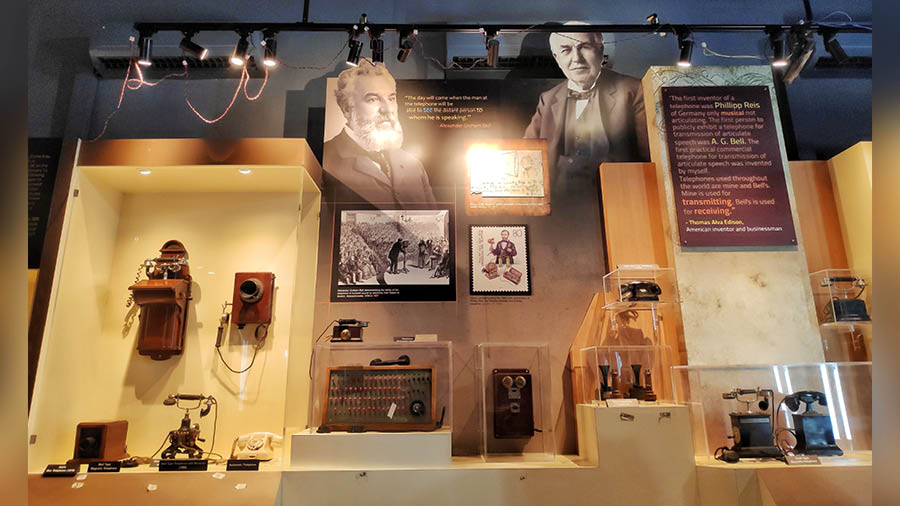When US president Rutherford B Hayes had said about the telephone, “Great invention, but who would ever want to use one?”, little did anyone know how this form of communication technology would change mankind forever.
Travelling through decades, several inventions have been showcased at the 'Vintage Voyage: Communication Technology', the new permanent gallery at the Birla Industrial and Technological Museum, a unit of National Council of Science Museums, Ministry of Culture, Government of India. The gallery will be formally opened to the public on May 18 marking International Museum Day, but My Kolkata was there to check it out.
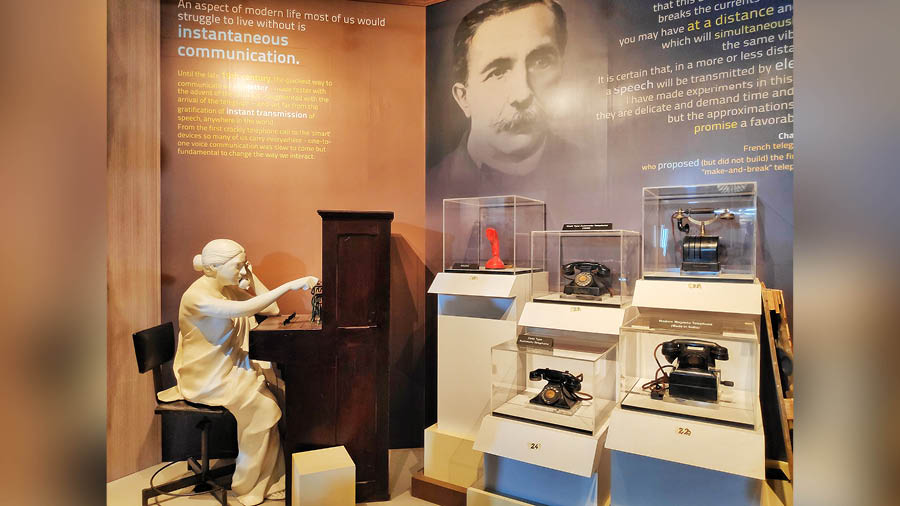
The gallery not only focuses on history and interactivity but also demonstrates instances of the impact on society
The Vintage Voyage Gallery not only spells out the evolution but is also an artistic curation coupled with modern day technology. Visitors can scan a QR code and get information on the exhibits. The gallery is divided into four distinct sections – Transmit which showcases Morse Code, Telegraphy and Wall Street crash and more; Broadcast which talks about wireless communication like radio; Tether is all about instantaneous communication or the telephone; and Swadeshi Connect which highlights the contribution of Indian society in the evolution of communication. The gallery not only focuses on history and interactivity but also demonstrates instances of the impact on society.

Subhabrata Chaudhuri, director, BITM
Speaking about the gallery, BITM director Subhabrata Chaudhuri said, “The gallery was being conceptualised for almost the last six months. Currently, we are all celebrating 75 years of the country’s Independence and since BITM is the oldest body of the Science Museum, this gallery has curated over 75 artefacts. Communication is innate to our heart. We all communicate not only with others but also with ourselves and our surroundings. We thought this is the right time to go for this gallery to also enhance the culture of our society.”
“The very purpose of an institution like ours is to bring a thirsty horse near a pond, to encourage students. The basic message of the gallery is that forms and functions have changed but fundamentals remain. Earlier, it used to be pigeon messenger, hieroglyphics, to today’s emojis, how technology can further take itself forward, if that exposure can be given to students , I think that they will get drawn to science and technology,” Chaudhuri said.
Exhibits include transmitters, transmission printers, radio, gramophone, and various kinds of telephone, documents, fire alarm system and more. The gallery has live demonstrations of the working of several technologies. Videos are played on loops for visitors to understand the crux of the mechanism which drives modern day technology. The gallery not only has scientific exhibits but related murals, artwork, mannequins make the space an amalgamation of both art and science which is bound to attract visitors.
My Kolkata picks five artefacts that you can’t miss when you visit the gallery
#1 Hear Rabindranath Tagore’s voice

“Rabindranath Tagore’s recitations were recorded in the Neumann Disc Recording Machine in 1932. Two of his recitations will be played via the gramophone for visitors to hear,” said Aditi Ghose, education officer, BITM, while giving a tour of the space. It is indeed a rare experience to be able to hear the works of Tagore in his own voice and one should not miss Tobu mone rekho and Ami jokhon Babar moto hobo.
#2 Check out the Ericofon
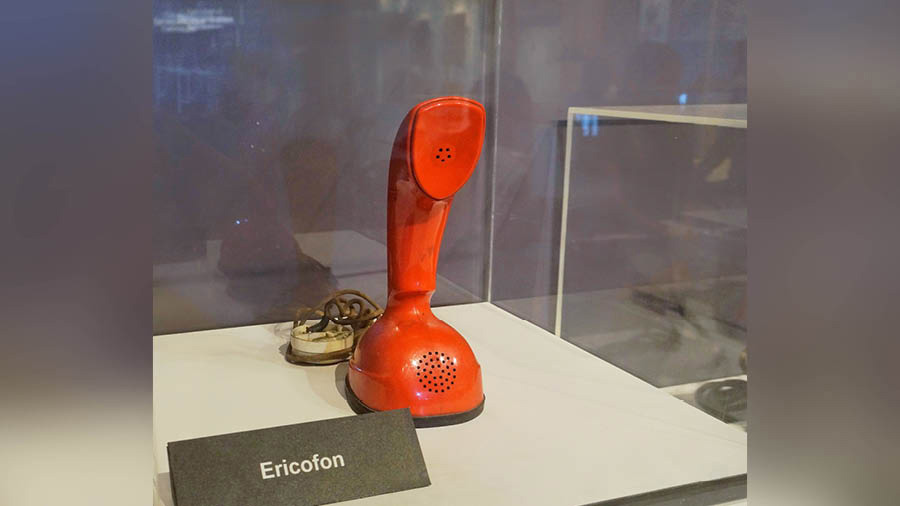
Here’s the father of mobile phones. “The Ericofon, we discovered, had a history. It was the first phone of its type which was portable to a certain distance since the dial-pad is attached to the construction of the phone. One could sit, stand or recline and use the phone as per their comfort. Also, these phones used to come in different colours as opposed to the darker shades of handheld ones.” informed Ghose.
#3 The Ionosphere Recorder
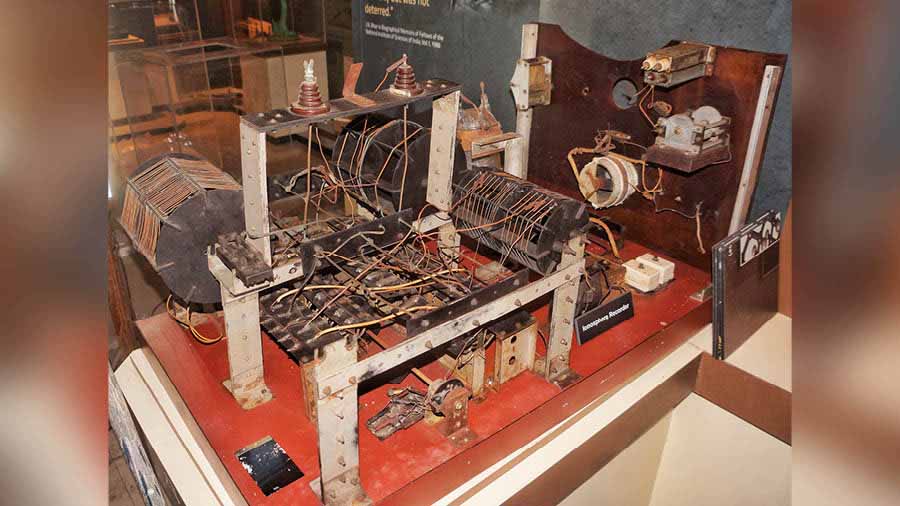
The interesting model called the Ionosphere Recorder was used by Sisir Kumar Mitra and donated by the University of Calcutta to the BITM. The recorder and its usage re-confirm the importance of ionosphere and its significance in wireless communication. Mitra was instrumental in starting the department of Radio Physics in the University of Calcutta and was one of the most notable scientists from Indian soil.
#4 Optical Telegraphy
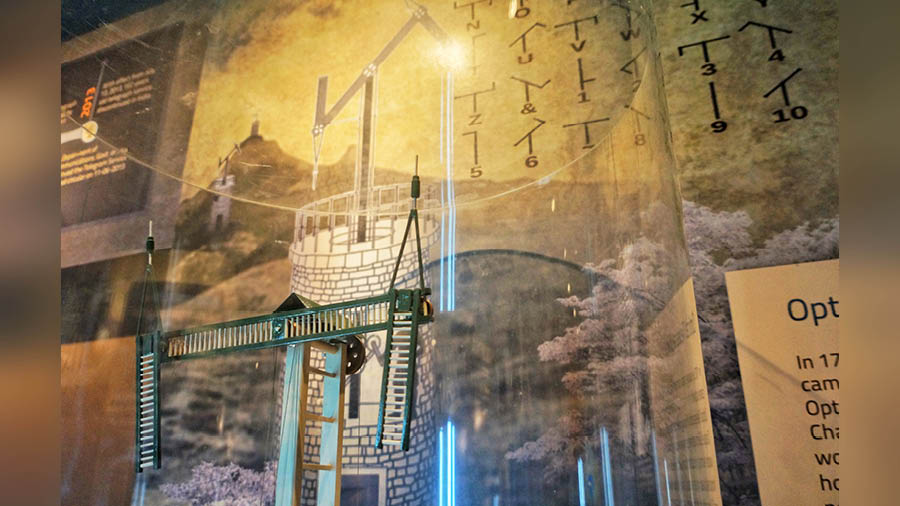
“The optical telegraphy form of communication was used by Napoleon. The wind-mill type structures change position to signify alphabets. By joining the alphabets the entire message was communicated. Every tower had dedicated messengers who would record these messages,” said Ghose. The windmill-type structures are moveable and create different formations which signify different letters. The letter formation is also mentioned with the exhibit. Will you be able to decipher the message then?
#5 Fire Alarm System
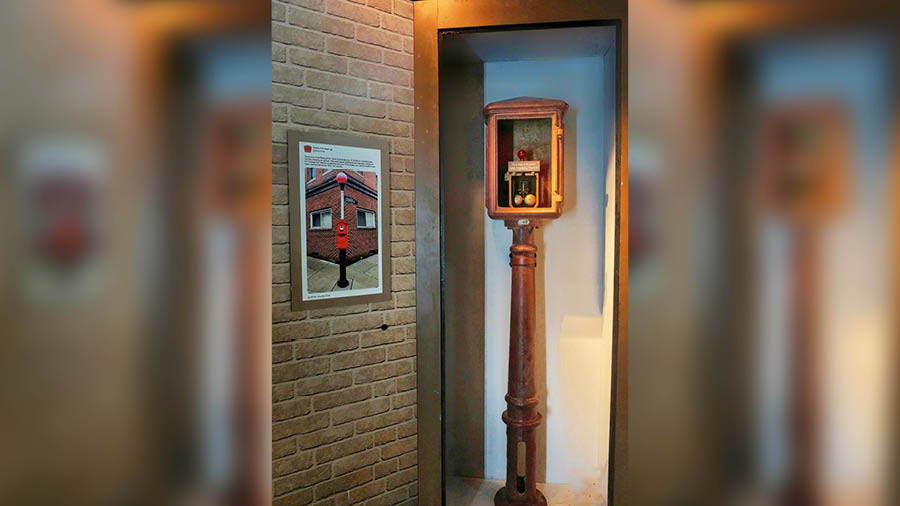
A unique incident reminded society how technology can save mankind at the most vulnerable times. “These fire alarm systems with cranking systems can be easily mistaken as post boxes or lamp posts and have been installed on the streets of Boston since 1852. Triggering these fire alarms would send signals to the fire brigade who would then rush to the rescue. With time, the structures remained but with advanced technology their purpose was forgotten. However, when a recent case of fire broke out in 2018, a young citizen sent a distress signal using these very fire alarms which were still working. Needless to say, the fire brigade reached the spot shortly and managed the situation. The entire incident was also tweeted by the Boston fire services.” narrated Ghose. The fire alarm on display runs on sensory motion and one can trigger the alarm to see how it works.
Quick facts:
- Open: 9.30 am to 6 pm; every day except Diwali and Holi
- Charges: No separate charges. Included in ticket for touring the museum
- Address: 19 A Gurusaday Road, Kolkata 700019
- Special facility: Group demonstrations available


